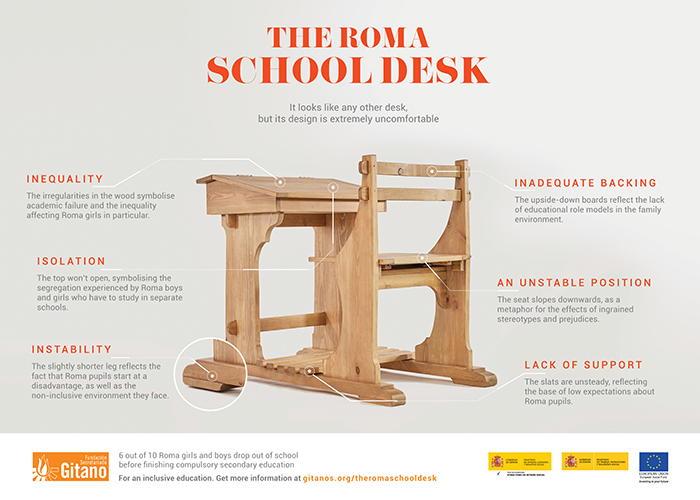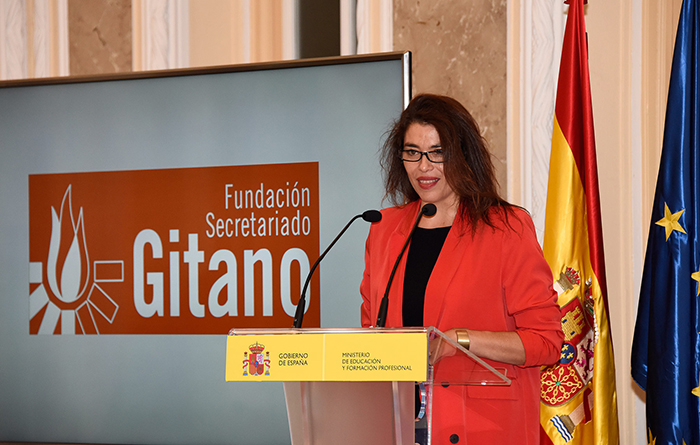-
The Roma School Desk
The Fundación Secretariado Gitano (FSG) presents the first desk that fights school dropout. "The Roma school desk" is the new awareness campaign of the FSG.
The objective is to sensitize society and public authorities to work on measures that ensure equal real opportunities for Roma students.
6 out of every 10 Roma girls and boys leave before completing the Compulsory Secondary School, compared to 2 out of 10 of the general population. Among many factors that cause this situation is the absence of referents, low expectations and confidence in their abilities or school segregation.
Imperfections
The desk, which at first glance seems normal, is designed with various imperfections (limping legs, inclination, etc.) that represent the different causes and barriers that Roma students have to overcome in their day to day, such as segregation school, lack of references, low expectations of success, or stereotypes, among others. The reality is that 6 out of every 10 Roma girls and boys (63.4%) drop out before finishing Compulsory Secondary Education compared to 2 out of 10 of the population as a whole.
The Responsibility of the Public Authorities
Mayte Suárez, member of the Management team of the Fundación Secretariado Gitano, affirmed during the presentation that "specific measures are necessary and a crash plan against school failure and dropout is urgently needed to guarantee the continuity of Roma students in the education system. Without the Compulsory Secondary education title, your chances of progress in the future are totally diminished.”
Mayte Suárez stressed that "there is still a lot to be done and progress is very slow," and has pointed out the responsibility of the public authorities to guarantee the right to education, also for Roma students.
Factors and Barriers
The imperfections of the desk represent a simile of both individual and educational and socio-economic factors and barriers that, for the most part, have to do with the lack of opportunities that Roma students face because they belong to a very stigmatized ethnic minority and whose schooling has been historically late.
Some of the most frequent barriers facing by Roma students are the lack of guidance, support and educational reinforcement measures adapted to the needs of Roma students to ensure that they finish the compulsory stage and continue studying; the school segregation that occurs in many educational centers and classrooms, where a high percentage of Roma students are concentrated, or the low expectations and confidence in their abilities by their environment, teachers, their family and themselves for achieving educational success. The short educational trajectory in many Roma families entails a low valuation of studies and the absence of figures to follow.
The situations of poverty and exclusion, which affect many Roma families, represent another disadvantage, which joins the bad social image and discrimination that still persist towards the Roma community.
The Data
According to data from the Comparative Study on the situation of the Roma population in Spain in relation to employment and poverty presented by the Fundación Secretariado Gitano at the end of September, only 17% of Roma people have compulsory secondary education or higher, compared to 77% of the general population as a whole, which evidences the existing gap. With regard to higher education, only 3% of Roma women and 5% of men have a higher degree, compared to 50% of men and women in the general population.
The desk is in the street
In the act of launching the campaign, “The Roma school desk” has been placed in the center of Madrid at the confluence of Alcalá and Gran Vía streets, to also sensitize the citizens, inviting them to sit on it and feel their own skin imperfections. The desk will now travel through Spain to extend the awareness action and make visible a reality unknown to most.